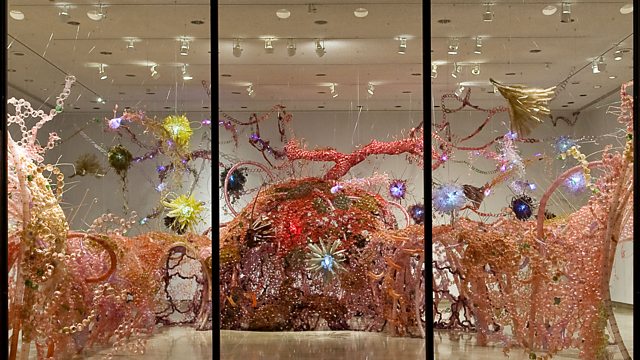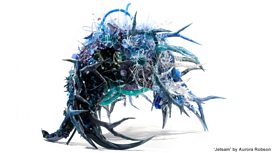Plasticity
Plasticity in our brains, everyday objects and debris. With artist Aurora Robson, nanochemist Sujata Kundu and neuroscientist Takao Hensch.
Isn't it remarkable that everyday objects, especially those made from modern plastics, can bend, squash, stretch, and generally 'shape-shift' in a number of ways? So how is that possible? Bridget Kendall and guests consider plasticity from several viewpoints: Aurora Robson is an artist who works with plastic garbage, Sujata Kundu a nanochemist who analyses plasticity at the level of atoms and electrons, and Takao Hensch a neuroscientist investigating whether it's possible to recreate youth-like plasticity in an adult brain.(Photo: The Great Indoors: art installation by Aurora Robson).
Last on
![]()
Art from plastic trash
Artist Aurora Robson on why she makes her students use plastic waste.
Aurora Robson

Aurora Robson is a multi-media artist known predominantly
for her transformative work intercepting the waste stream. She is best known
for assembling cast-off plastic bottles, which she colourfully paints, into
wildly inventive hanging sculptures, the smaller ones sometimes containing LED
lights, and large works that fill entire rooms.聽
Robson is also the founding artist of Project Vortex, an international
collective of artists, designers and architects who work with plastic debris.聽
And you can see some more of Aurora's transformative art in
the gallery on the right hand side of the page.
Sujata Kundu

Sujata Kundu is a Teaching Fellow in the Department of Materials at Imperial College, London. A nanochemist, both literally and professionally, Suze is also a passionate science communicator, giving regular public lectures at schools, universities and science festivals where she loves sharing the secret science of everyday things.
Takao Hensch
Takao Hensch is joint professor of Neurology, Harvard Medical School at Boston Children鈥檚 Hospital, and professor of Molecular and Cellular Biology at Harvard鈥檚 Center for Brain Science. His research focuses on critical periods in brain development. By applying cellular and molecular biology techniques to neural systems, his lab identified pivotal inhibitory circuits that orchestrate structural and functional rewiring of connections in response to early sensory experience.
Broadcast
- Sat 22 Aug 2015 11:00大象传媒 Radio 4 FM


